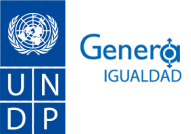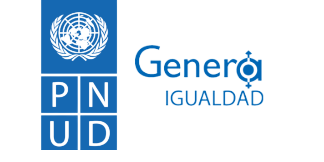UNDP’s Gender Equality Seal assists public and private enterprises in ensuring that their workplaces are fair and equitable. The result? A happier, more productive and innovative workforce – with higher rates of women in non-traditional sectors and leadership roles.
There are a lot of challenges to achieving gender equality,” said Randi Davis, Director of the Gender Team at the United Nations Development Programme (UNDP). “We need to change attitudes towards an understanding and an acceptance of women as having equal rights in all spheres.”
Women’s economic empowerment continues to lag behind across the world. Women have lower rates of participation in the labour force and face higher levels of precarious employment and poverty than their male counterparts. “It’s a very unequal picture,” Davis said.
For Davis, UNDP’s Gender Equality Seal is a step towards tackling these inequalities at companies and public administrations alike.
Providing the right incentives
The seal was developed in collaboration with the private sector and governments to create certification incentives when commitments towards gender equality are met. Piloted in Latin America, with certifications for over 600 companies and 1,900 branches in 14 countries since 2009, a global roll-out of the programme will provide support and acknowledgement to actors working to close the gender gap.
The certificate itself, however, is just a snapshot of a long-term change. UNDP assists public and private enterprises throughout the implementation of a ten-step process.
It begins with the verification of a company’s commitment. The process targets gender throughout all levels of an organisation – from identifying gaps to developing policies and implementation strategies.
Among the areas of focus, the certification looks at whether organisations have adopted work-life policies, whether there are safe spaces for all employees, whether women and men are being hired in non-traditional sectors, whether they are ensuring equal remuneration and whether women are in leadership positions.
A bronze, silver, or gold seal is awarded based on the organisation’s achievement. Through an ongoing monitoring of progress and continuous improvement to maintain certification status after the certificate is awarded, the Gender Equality Seal looks to legacy as well.
Giving recognition where it’s due
Davis explained that the seal’s success has, in a large part, been due to its incentives approach, as opposed to imposing sanctions for non-compliance. “It gives recognition for good work done,” she said.
The process has led to higher productivity in companies because of improved rates of female employment and employee wellbeing. “For companies, it’s leading to a happier and more productive workforce – and one that’s even more profitable,” said Davis. “For gender equality, it’s meaning more women in leadership roles, more women receiving equal pay for equal work, and it means more women in non-traditional sectors.”
In connection with the seal, UNDP has set up global and regional forums and international networks, contributing to the sharing of best practice and knowledge exchange. South-South cooperation has enabled the achievement of wider development goals, such as the strengthening of governmental institutions.
Future challenges for the seal will include adapting to small- and medium-sized enterprises. Some of the certified companies “are huge employers around the world, especially in some of the Lesser Developed Countries where we work, so it’s really critical,” said Davis.
Vea a Randi Davis hablar sobre el Sello de igualdad de género del PNUD aquí:

